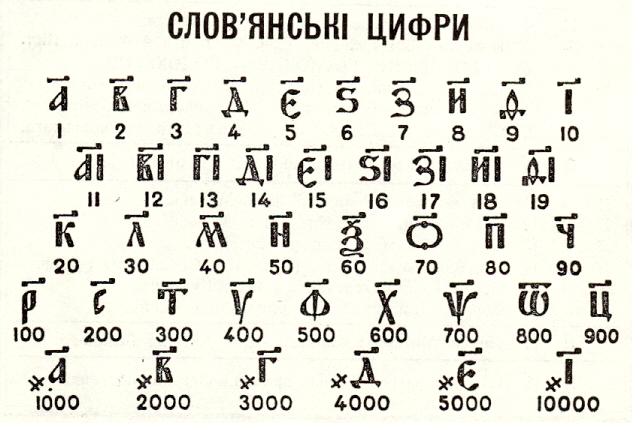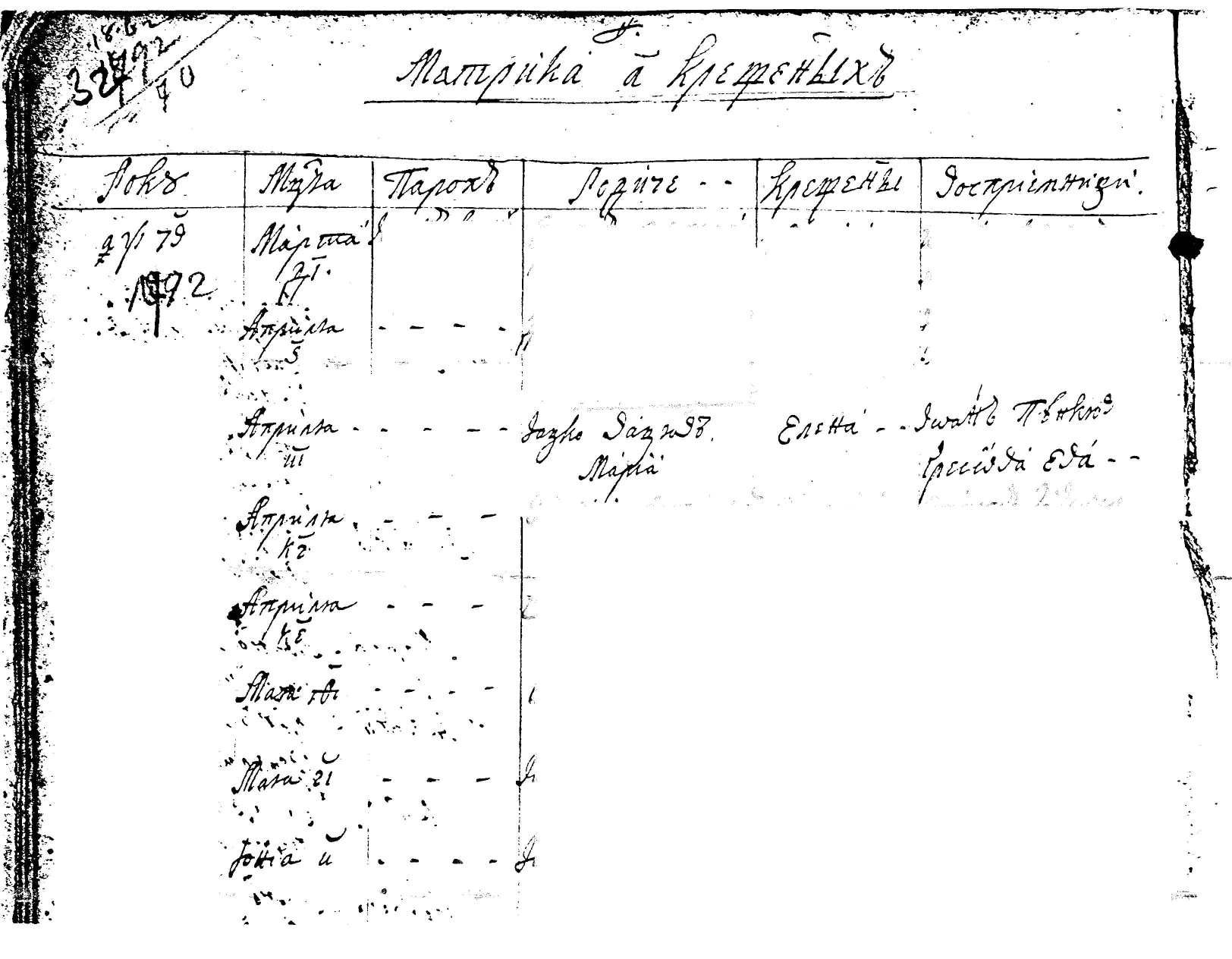|
|
|
I was looking through an almanac from 1977, and came across these "slovyanski tsyfry" (slavic ciphers - letters). A special "Duzhe dyakuyu!" to Andriy H. and Lubomyr O. for providing the explanation below... |
 |
| Before the introduction of the now almost universally
used Arabic numerals, several cultures used their existing letters as numerals.
One version of this are the widely known and still used Roman numerals.
This system may be adequate for recording numbers, but for arithmetic purposes
it is very cumbersome - just try dividing IMM by XC.
In Hebrew, the first nine letters of the alphabet can designate the numerals 1--9, the next nine have the value from 10--90, etc. The same pattern was used in Greek, the only complication being that the number system was set up before some letters were deleted from the alphabet. Even today, in Greek church usage, some of these obsolete letters are used as numerals only. When Greek uncial script was expanded with the needed letters to create the (Old) Slavic (Cyrillic) alphabet, the Greek numerical pattern was adopted, but now in a Cyrillic guise. To differentiate the numerals from ordinary letters, a bar (titlo) was placed over the letters in question. This Slavic system has a Slavic face because the obsolete Greek letters (still used as numerals) were replaced by Cyrillic Slavic letters that designated sounds not found in Byzantine Greek. In this system (those are the phonetic sounds for the letters): a = 1, v = 2, h = 3, d = 4, e = 5, dz = 6, z = 7,
y = 8, theta = 9;
With 1000, you start all over again with "a", but this time you place a double cross (actually a double "x") in front. This is a Greek practice, from chilia = thousand. So "xa" = 1000, "xv" = 2000, etcetera. There are very imaginative ways of indicating very high numbers, but these might have varied from country to country. The current year, 2001, is written "xva" (with a bar over the letters). These numerals are now used only in liturgical books set in (old) church Slavic type, and even there, Arabic numerals are being used. On the other hand, historians who want to use older documents ignore this system at their extreme peril. The only thing to remember is that the ORDER of some digits
is reversed. Thus, the number 12 is written as 2 + 10 ("v" + "i",
rather than "iv"; "v" = 2," i" = 10). This comes from the way the
teens are said: odyn+na+desyat' = "ai", dva+na+desyat' = "vi", try+na+desyat'
= "hi", etcetera. Also, note that this system has NO zero.
|
